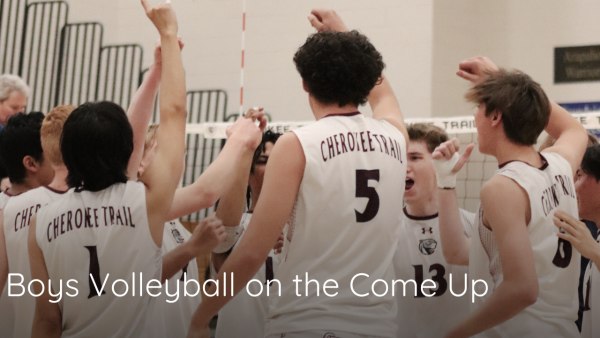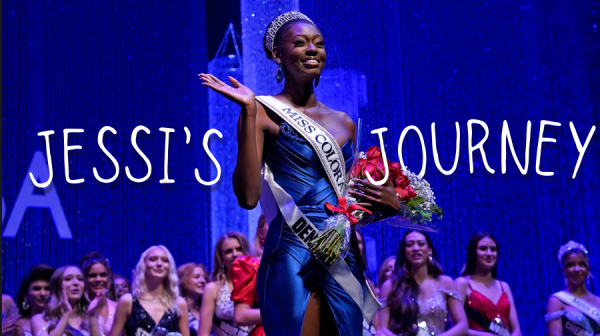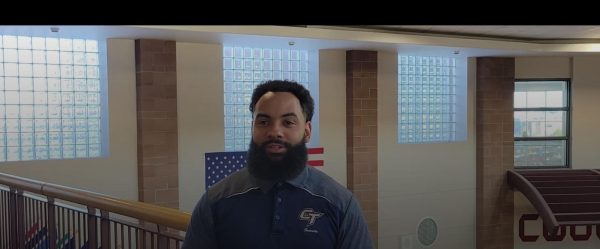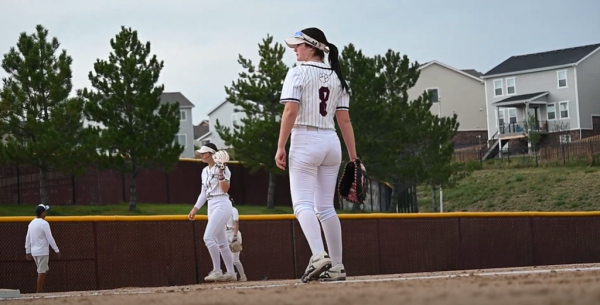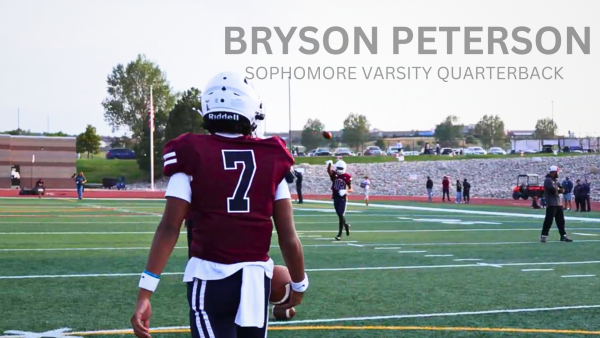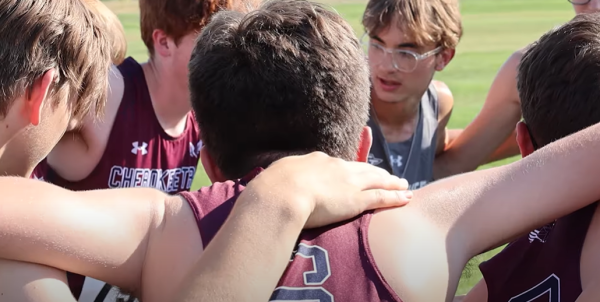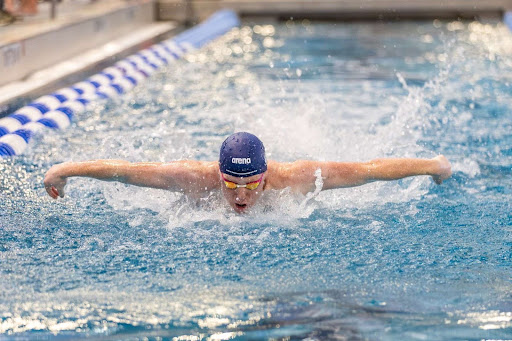Boys Golf: Getting to Play
Watching his ball sail away after a well-placed hit, Gavin Buttshaw (12) concentrates hard at a tournament on Aug. 31. “We can always play good separately, but we’d never put it together at the same time,” said Buttshaw of the separated team dynamic due to safety precautions. “And it was kind of tough.”
The uncertainty felt by student-athletes in the age of Covid-19 is a sting that no student is immune to. Fear of not getting to play ran as rampant as a stray ball at the beginning of the school year. Golf, a fall sport in Colorado, was a sport that was up in the air as possibly not being able to play, but the teams did get to be on the course this season.
“I am happy we can play golf is probably the best sport because we don’t have little to no contact with the other players making it easy to follow the guidelines,” said Mason Bernard (12), a player varsity team this year.
The safety guidelines referred to by Bernard follow a standard set by CCSD and CHSAA, used in the halls of schools across Colorado and now the golf course. Coaches have to wear masks, “But we are not required to wear masks,” said Bernard. Before practices and tournaments, coaches and volunteers would take the players’ temperatures and ask them a myriad of questions, “like have you been around anybody with COVID you have a fever, cough, shortness of breath or like sore throat,” said Tyler Cassaday (12), a varsity player. “So luckily, none of us had that.”
Being safe has affected more than just the coach-player relationship; it has impacted both players’ potential college seasons and their relationships with their fellow teammates on different sport levels.
One of the most significant deficits of the season, Gavin Buttshaw (12) has noticed, is that safety precautions “took away a lot of the communication between the team and knowing how people are doing and seeing what they can work on.” Buttshaw, having played since his freshman year, noted that spending time with the varsity players, “the ones that we’re playing at the top level,” was incredibly helpful to up his own game, “they were always teaching me to get better,” said Buttshaw. “It was challenging to make everybody better this year.”
Cassaday was scared of the changes to the college scouting process. Usually, college coaches would attend tournaments and see for themselves how a player was performing on the course. This year, travel shut down, and coaches couldn’t make that same symbolic journey to signing a player.
“I’m gonna go to college for golf,” said Buttshaw. “Having a school season is very important for those coaches; they want to see your competitive scores and stuff like that.”
“If I didn’t have this season, I would have been pretty much screwed,” said Cassaday. “My chances for college golf would have been much different.”
Adding to this sentiment about their senior season, Buttshaw said, “this is a preeminent political thing, I think.” Buttshaw was still able to meet with coaches, maintaining social distancing protocols and staying safe, and, “there was always still a connection. That’s major for me as a player because I got to know that this coach… isn’t scared of this big thing.”
The safety protocols aren’t the only thing that changed for players. On the positive side, there was more time to reflect on how a player is performing and how to get into “the zone.”
Michael Grube (11) reflects this view. “My season has not been difficult at all, I grind all day and as well at practice…it helps me stay locked in because I’m alone more, more focused,” said Grube. “I feel very fortunate to play because I know that all sports cant play right now during this awful pandemic.”Cassady and Buttshaw corroborated. No matter the changes to the season, the fact that golf players could play at all was powerful in its own right. “The best part was being able to play,” said Buttshaw of how he was feeling going into the season. “I was pretty nervous about not playing before. That was the best part of the year for me.”


